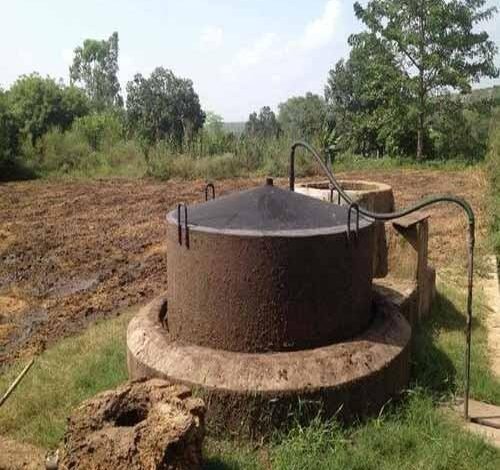Gobar Gas to fuel the USD 93 billion global biogas market

According to MarketStudyReport, global biogas market size was evaluated at USD 52.9 billion in 2020 and is touted to reach a valuation of USD 93.64 billion by the end of the forecast period 2021-2027, expanding at a CAGR of 8.5 percent throughout.
Based on product type, worldwide biogas industry is classified into livestock manure (mostly cow dung), sewage, crop residue, and food waste. Out of the classification cow dung is seen as the most sought-after source to generate biogas or an even better terminology Gobar Gas.
The Indian biogas market is valued at USD1.47 billion in 2022 and is expected to grow to USD 2.25 Billion by 2029. In India, animal waste is the primary source of raw material used to produce biogas, and cow dung is the primary resource.
Hindustan Petroleum Corporation Limited on Tuesday commenced its Cow Dung to Compressed Biogas Project at Sanchore, Rajasthan.
The plant, first such under HPCL’s Waste-to-Energy portfolio, is proposed to utilise 100 tons of dung per day to produce biogas, which can be utilised as automotive fuel. The project is proposed to be commissioned in a year’s time.
A biogas plant with a capacity of 200 cubic metre, that utilises around 5,000-kilogram cow dung per day, has been commissioned at Akauni village of Chandauli district in Uttar Pradesh. Under the guidance of the National Dairy Development Board (NDDB), this biogas plant has been set up by Nand Sadan Gaushala – run by a progressive dairy farmer Nagendra Singh under the aegis of SAAF Energy Private Limited. The project is providing round-the-clock supply of biogas across 120 households in the village which can be used as cooking gas.
Cow dung can be processed into an alternative energy source by processing it into biogas.
The process of making biogas is very simple. The principle of making biogas is the anaerobic decomposition of organic material to produce gas, mostly methane and carbon dioxide gas. Methane gas has flammable properties. Cow dung waste is put into anaerobic biodigester tube. The anaerobic decomposition process is assisted by several microorganisms, including methane bacteria.
Microorganisms can work optimally in breaking down organic matter when the temperature is set around 30-50oC. The by-product is an organic fertilizer that can be used to fertilize plants. The accumulated gas is collected in the digester and then distributed to the house for further use, for example for lighting and fuel replacement.
Biogas can be used as an alternative energy source that reduces the impact of fossil fuel use. These alternative energy sources, among others, can be used as electricity generation, a substitute for LPG and kerosene when cooking.
Biogas can also be used as a towing power for water pumps and fuel for vehicles at the industrial level.
Studies reveal that each kilogram of cow manure can produce between 15 and 30 litres of biogas per day and even up to 40 litres per day.
Every cow produces, on average, 29.5 kg of manure and between 250 and 500 litres of methane each day, and turning cow dung into biogas can quickly become a cost-effective waste management solution worldwide.
Asia-Pacific market is touted to witness a notable CAGR over the forecast period 2021-2027, driven by factors such as increasing government spending on renewable energy resources, and rising disposable income of consumers. In Asia-Pacific market, India is touted to witness a northward climb in biogas production and usage.
Growing concerns pertaining to emissions control of the conventional power generation stations coupled with ongoing efforts toward the diversification of the energy portfolio will stimulate the global biogas industry growth. Supportive regulatory framework, and easy availability of feedstock are few prominent factors favouring technology deployment. In addition, growing demand for efficient waste management practices will further boost the installation of biogas plants. Organic waste biogas market will grow on account of intensifying significance of resource recovery practices. Rising focus toward the expansion of biogas production form biodegradable sources of garbage owing to surging waste generation rate due to improving income levels will enhance the business landscape.
The return-to-renewables will help to lessen climate change is an excellent way but it requires to be sustainable in order to ensure a sustainable future and bequeath future generations to meet their energy needs. Biogas produced from renewable source can be one of the response for future energy production.
The 19th Livestock Census 2012 pegs the total cattle and buffalo population in India at nearly 300 million, resulting in the generation of 3 million tonnes of cattle dung per day. The Narendra Modi-led government, with the GOBAR-Dhan Yojana, aims to produce cleaner fuels, eventually leading to a shift to biogas and bio-CNG.
Startups focused on commercialising cow-by-products like dung and wring, in addition to dairy can get 60 percent of their initial funding from the Indian government. The Kamdhenu Aayog started in 2019 under the leadership of Prime Minister Narendra Modi was formed with the innate idea of improving the growth of the livestock industry in the country, with an initial investment of Rs 500 crore.




